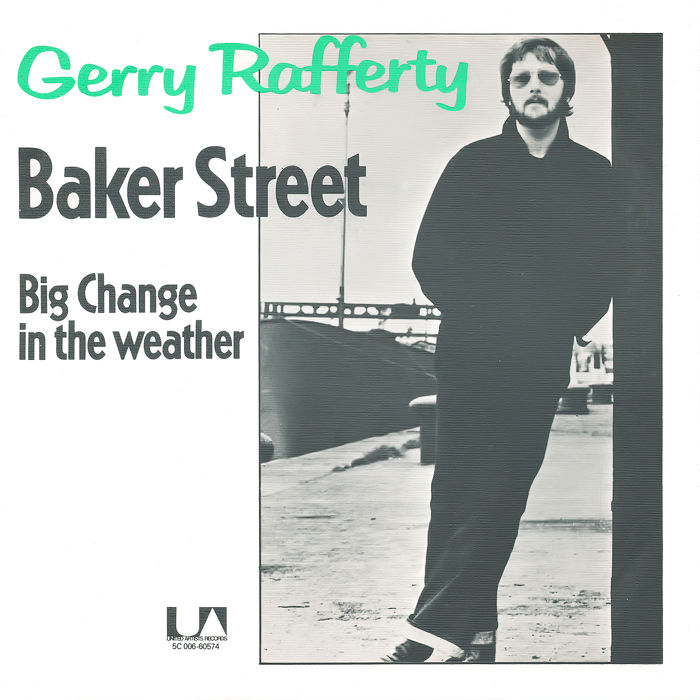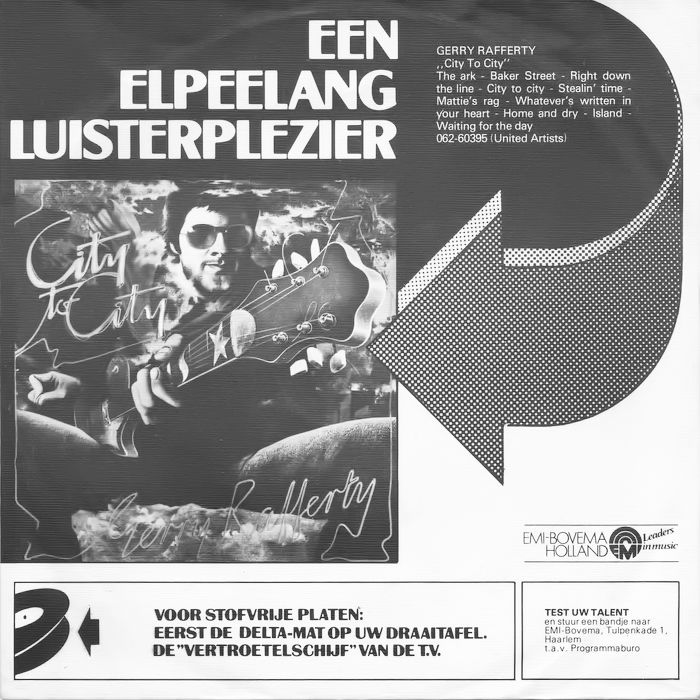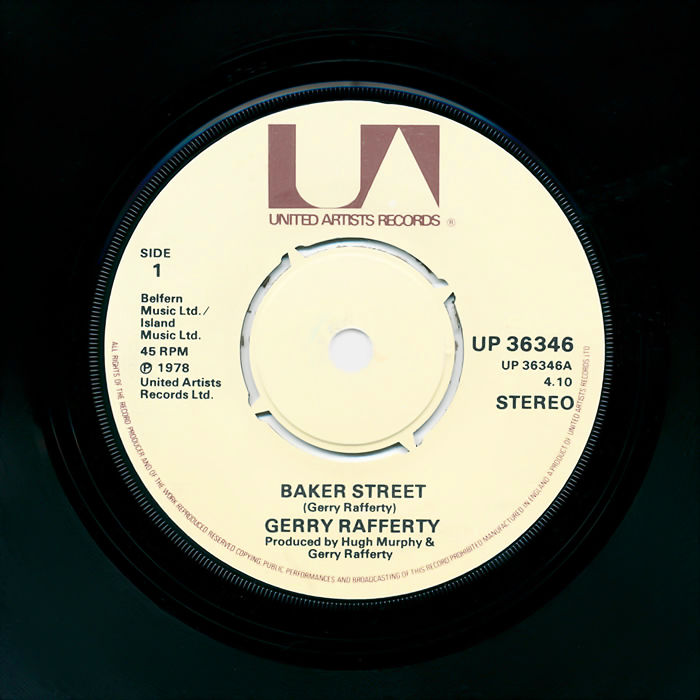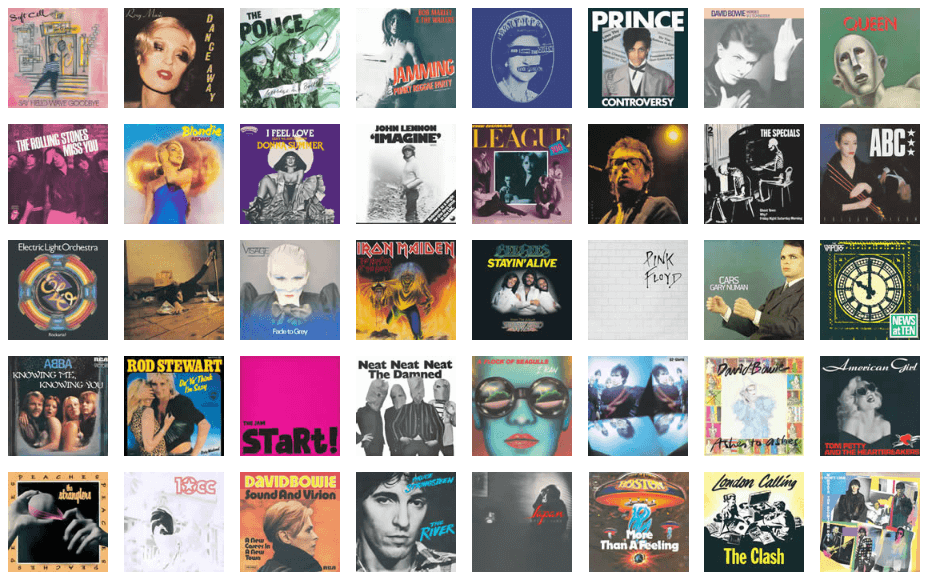The Story Behind The Song
In the cramped recording studio, guitarist Hugh Burns had just finished laying down the guitar solo. Gerry Rafferty asked him to have a go at the eight-bar opening riff. Burns played it, but shook his head, thinking it would sound better on saxophone. "That's the way I always saw it," Rafferty agreed. They brought in session musician Raphael Ravenscroft who recorded it using his alto sax. It transformed the song, and the blistering solo is arguably the most famous saxophone part in the history of popular music.
During the spring and summer of 1978, the intro was belted out from transistor radios everywhere as Baker Street became a worldwide hit. Recently it was officially certified as having been played on radio six million times, the equivalent of the song being played 24/7 on one station for 40 years. This is in addition to the five million copies it shifted. Little wonder Gerry Rafferty became extremely wealthy almost overnight.
It had not been an easy journey, however. Born near Glasgow, Rafferty was an unwanted third son to an alcoholic miner, who vented his anger on his family; every Saturday night Gerry and his mother had to steer clear of his father's drunken rampages when he returned from the pub. "There were lots of unhappy times spawned from when I was a kid," he later lamented, but he recognised that his father had an extremely hard life. The demon of drink would also haunt Rafferty who died of liver failure in January 2011.
Music was Rafferty's salvation. In 1969, he joined The Humblebums, a folk group led by aspiring comedian Billy Connolly, which soon became a duo. On stage, Connolly would introduce Rafferty by saying: "We are The Humblebums... I am the humble one." They separated in 1971, Connolly becoming the leading comedian of his generation. Rafferty released a solo album with the punk-sounding title, Can I Have My Money Back?
He next formed Stealers Wheel with childhood friend Joe Egan and released Stuck In The Middle With You, a Top Ten hit on both sides of the Atlantic in 1973. The success led to legal problems, which meant Rafferty was unable to release new material for three years. During this time, he frequently travelled from his home in Scotland to London to resolve the legal dispute, crashing at a friend's house near Baker Street. This experience would lead to his biggest hit.
The upbeat music of Baker Street is juxtaposed with a dark lyric about someone losing their way and finding pyrrhic salvation through the bottle: "Well another crazy day, you'll drink the night away and forget about everything". Ultimately this only increases loneliness, even in a crowded city: "This city desert makes you feel so cold. It's got so many people but it's got no soul." He stops by a friend's house, a rolling stone who longs to move away from the city: "He's got this dream about buyin' some land. He's gonna give up the booze and the one night stands."
For Rafferty, the city and the record industry are the same, and he wants out. Then, almost joyously, the autobiographical narrative revolves at the end: "The sun is shinin', it's a new mornin' You're goin', you're goin' home". The dispute over, Rafferty can leave the city and return to recording music.
The song has an unusual structure: there is no traditional chorus, which is replaced by the booming saxophone riff. Despite being an iconic part of pop history, Ravenscroft hated it: the solo was slightly out of tune and it irritated him. He must have also been annoyed by a wild myth that his solo was played by TV presenter Bob Holness. This was the result of a "Would You Believe It?" column by Stuart Maconie in the NME which offered ridiculous spoof facts that - he thought - no one would accept. But credulous people believed it like a conspiracy theory, and it became widely accepted as the truth.
The truth is this: Baker Street, with its saxophone riff still echoing from the 1970s, is a timeless pop classic.
We hereby instate Baker Street by Gerry Rafferty on The Wall as No.9 Best Single of 1978
It's to my shame I've only recently come to appreciate what a great song this is and so I've missed out on years of enjoying one of the greatest sax riffs ever put down on vinyl.Dave B




